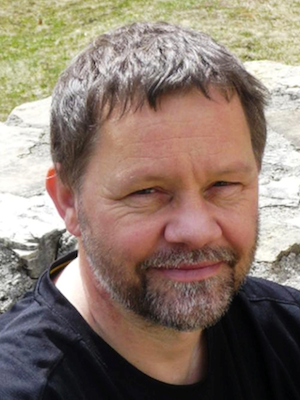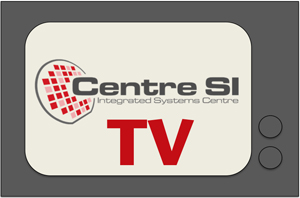Go to
March 27, 2015
Design and Fabrication of Arrays with High Spatiotemporal Resolution for In-Vitro Neural Tissue Recording and Stimulation
Friday, 27 March 2015 at 15:00 in INF 328
Roland Thewes, TU Berlin, Berlin, Germany
Abstract:
In the last decades, substrate-integrated microelectrode arrays (MEAs) have become a well-established tool for in-vitro recording and stimulation of neural tissue. Currently, commercially available “passive” MEAs suffer from restrictions concerning spatial resolution and number of readout channels, since purely passive interfacing devices are used. For this reason, the interest in high-density, high-resolution MEAs is increasingly growing, and CMOS-based MEAs have been suggested in the literature with significantly higher number of interfacing sites compared to their passive counterparts.
In this talk, an overview will be provided concerning engineering aspects of such devices and related systems. Various technical approaches will be highlighted concerning their pro’s and con’s and related technical challenges will be discussed in detail. Examples known from the literature and recent developments in this area will be considered as well.
About the speaker:
 Roland Thewes was born in Marl, Germany, in 1962. He received the Dipl.-Ing. degree and the PhD degree in Electrical Engineering from the University of Dortmund, Dortmund, Germany, in 1990 and 1995, respectively. In 1994, he joined the Research Laboratories of Siemens AG, where he worked on the design of non-volatile memories, and on reliability, yield, and design for manufacturability of analog CMOS circuits. From 2000-2005, he was responsible for the Lab on Mixed-Signal Circuits of Corporate Research of Infineon Technologies focusing on CMOS-based bio-sensors, low voltage analog CMOS circuit design, and device-circuit interaction. From 2006 until March 2009, he was heading a department in the Product Development Division of Qimonda. Since April 2009, he is a full professor at TU Berlin focusing on electronic sensors for bio-sensing and neural tissue interfacing purposes.
Roland Thewes was born in Marl, Germany, in 1962. He received the Dipl.-Ing. degree and the PhD degree in Electrical Engineering from the University of Dortmund, Dortmund, Germany, in 1990 and 1995, respectively. In 1994, he joined the Research Laboratories of Siemens AG, where he worked on the design of non-volatile memories, and on reliability, yield, and design for manufacturability of analog CMOS circuits. From 2000-2005, he was responsible for the Lab on Mixed-Signal Circuits of Corporate Research of Infineon Technologies focusing on CMOS-based bio-sensors, low voltage analog CMOS circuit design, and device-circuit interaction. From 2006 until March 2009, he was heading a department in the Product Development Division of Qimonda. Since April 2009, he is a full professor at TU Berlin focusing on electronic sensors for bio-sensing and neural tissue interfacing purposes.
He has authored or co-authored more than 120 technical publications including book chapters, tutorials, invited papers, etc. Currently, he is a member of the Technical Program Committee of ESSCIRC. In the past, he also served as a member of various other conference committees in various positions, such as ISSCC, IEDM, Joint Steering Committee of ESSDERC/ESSCIRC, BioCAS, … . He is elected member of the IEEE SSCS Adcom. He is a recipient of the German President’s Future Award (2004), the ISSCC 2002 Jack Raper Award (2003), and recipient or co-recipient of 8 further paper and conference awards.
Secondary navigation
- January 29, 2018
- August 30, 2017
- Past seminars
- 2016 - 2017 Seminars
- 2015 - 2016 Seminars
- 2014 - 2015 Seminars
- 2013 - 2014 Seminars
- 2012 - 2013 Seminars
- 2011 - 2012 Seminars
- 2010 - 2011 Seminars
- 2009 - 2010 Seminars
- 2008 - 2009 Seminars
- 2007 - 2008 Seminars
- 2006 - 2007 Seminars
- August 31, 2007
- June 29, 2007
- June 20, 2007
- June 5, 2007
- May 30, 2007
- May 16, 2007
- May 15, 2007
- April 24, 2007
- March 27, 2007
- March 14, 2007
- February 9, 2007
- February 8, 2007
- January 12, 2007
- December 5, 2006
- November 14, 2006
- October 31, 2006
- October 27, 2006
- October 26, 2006
- October 20, 2006
- September 20, 2006
- September 20, 2006
- September 20, 2006
- September 19, 2006
- 2005 - 2006 Seminars
- August 23, 2006
- August 22, 2006
- June 26, 2006
- June 20, 2006
- June 16, 2006
- June 7, 2006
- June 6, 2006
- May 30, 2006
- May 17, 2006
- May 10, 2006
- April 27, 2006
- April 12, 2006
- March 31, 2006
- March 29, 2006
- March 22, 2006
- March 15, 2006
- February 27, 2006
- February 8, 2006
- January 25, 2006
- January 19, 2006
- January 18, 2006
- January 17, 2006
- January 11, 2006
- November 30, 2005
- November 23, 2005
- November 2, 2005
- October 26, 2005
- October 25, 2005
- October 5, 2005
- September 28, 2005
- 2005 Seminars

